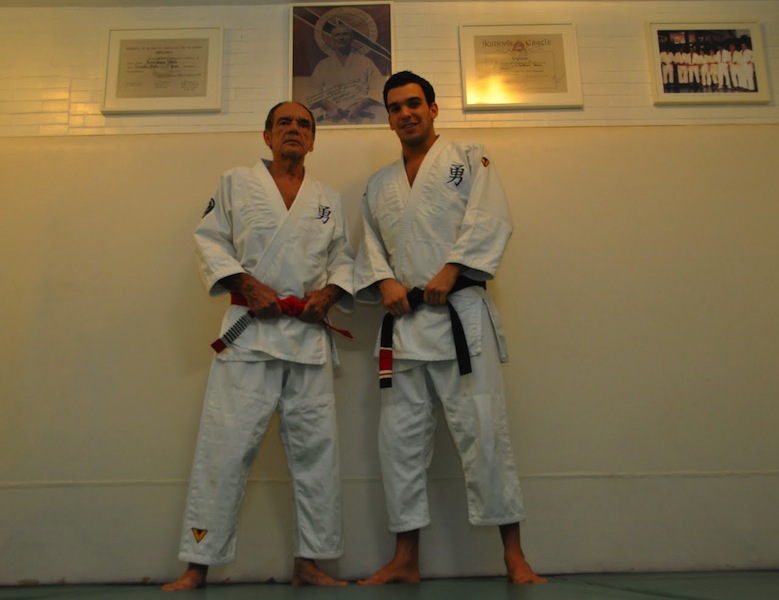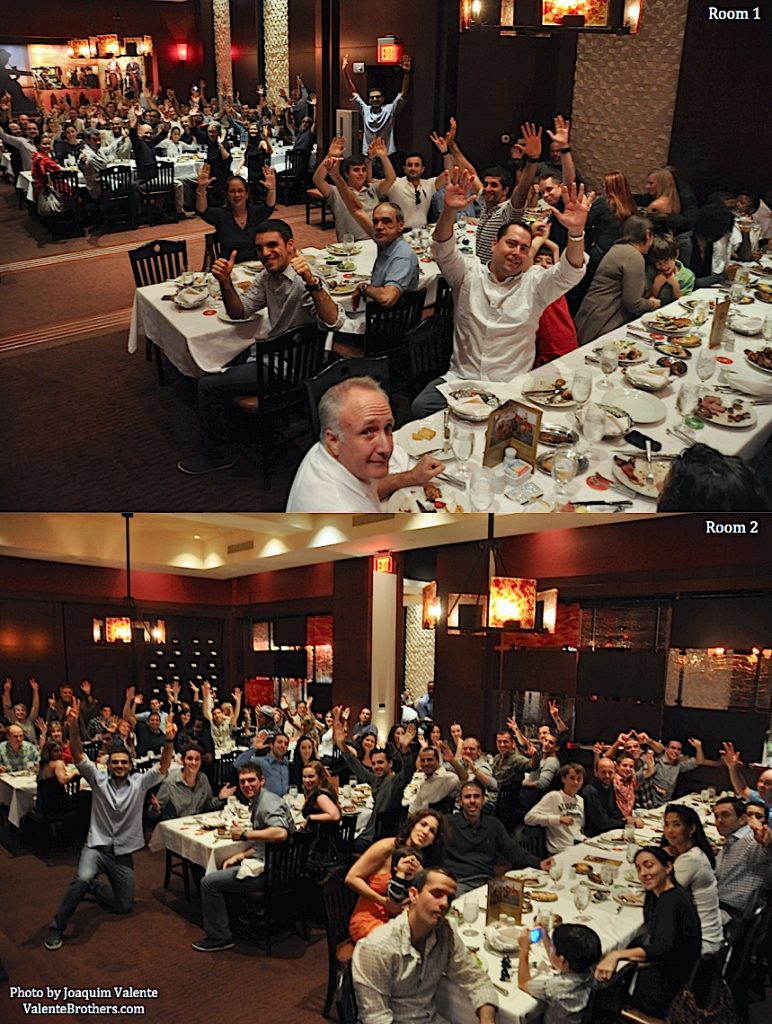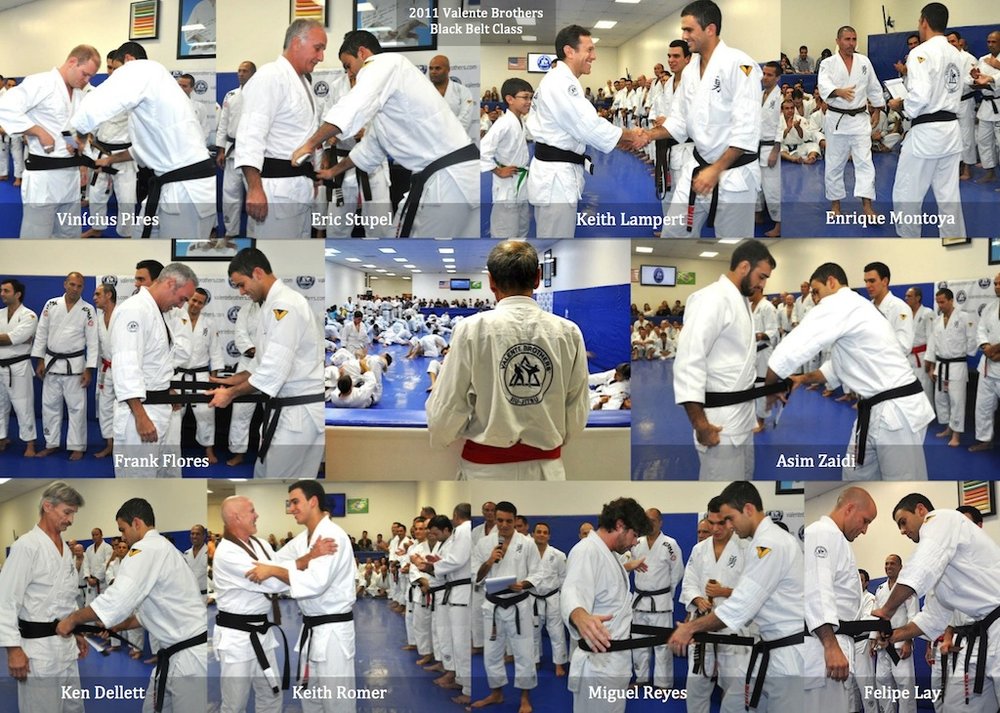
The Hélio Gracie Self Defense Challenge was devised by the Valente Brothers in 2000 to preserve and promote a vital element in Gracie Jiu-Jitsu that was slowly being forgotten: Stand up Self-Defense. With the tremendous growth of sport jiu-jitsu, most instructors were lured by the prestige and excitement connected with positive tournament results and started focusing their classes almost exclusively on point grappling rather than realistic street fighting. However, several jiu-jitsu masters still regard the defenses against strikes, bear hugs, headlocks, collar grabs and other common street attacks as the most important component of Gracie Jiu-Jitsu.
Under the supervision of Grandmaster Hélio Gracie, this challenge was elaborated to test students’ technique and reflexes as they perform defenses against randomly selected stand up attacks. The attacks are executed in a realistic manner by the professors and expert judges award points based on the participants’ precision, technical proficiency, timing and realism. After three rounds the top four contestants are announced to the audience.

Thank you all who came to the dinner. Sorry to those whose tables are not in the pic. More photos coming soon!
The 2011 Belt Ceremony was a success. Hundreds of students, friends and families packed Valente Brothers headquarters in North Miami Beach. Grandmaster Pedro Valente and UFC hall of famer, Royce Gracie, attended the event. Among the highlight of the night, were the 10 new black belts and the promotions by GM Valente and Royce of Professors, Pedro and Gui Valente to 6th and 5th degrees Black Belts respectively.
Check out the photo gallery on our Facebook page.
Soon, more pictures and the official video.
Pavel Vladimirovich Bure is a retired Russian professional ice hockey right winger. Nicknamed “The Russian Rocket” for his speed, Bure played for 12 seasons in the National Hockey League (NHL) with the Vancouver Canucks, Florida Panthers and New York Rangers.
Selected 113th overall in the 1989 NHL Entry Draft by Vancouver, he began his NHL career in 1991–92 and won the Calder Memorial Trophy as the league’s best rookie, then helped the Canucks to the Stanley Cup Finals in 1994. After seven seasons with the Canucks, Bure was dealt to the Panthers, where he won back-to-back Rocket Richard Trophies as the league’s leading goal-scorer (he also led the league in goal scoring with Vancouver in 1993–94, before the trophy’s inauguration).
Internationally, Bure competed for the Soviet Union and Russia. As a member of the Soviet Union, he won two silver medals and a gold in three World Junior Championships, followed by a gold and a silver medal in the 1990 and 1991 World Championships, respectively. After the Soviet Union was dissolved in 1991, Bure competed for Russia in two Winter Olympics, winning silver at the 1998 Games in Nagano and bronze at the 2002 Games in Salt Lake City. Following Bure’s retirement in 2005, he was named the general manager for Russia’s national team at the 2006 Winter Olympics in Turin.

This year’s winter Youth Fellowship Challenge (YFC) was once again a huge success. With over 100 kids from North Miami Beach, Pembroke Pines and Fort Lauderdale and nearly 250 parents and friends in attendance, it was the largest event so far. Professor Pedro Valente opened the challenge with a speech reminding all participants, parents, and friends of the fellowship and positive nature of the YFC. Professor Valente also reminded parents that Jiu-Jitsu, unlike other recreational sports, should constitute an integral part of every child’s education.
As usual the challenge was divided into two parts. Initially, the little champs and juniors took action, later Juniors 1 and 2 demonstrated their skills. Another great attribute of the YFC is that it provides participants with the opportunity to perform under pressure in a safe and positive setting.
In closing, Professor Valente thanked all present and in special the parents who believe in the Valente Brothers youth program and continuosly support the school.
Youth Fellowship Challenge – Sunday, November 20th (More Information)
Royce Gracie Seminar – Monday, December 5th at 7PM
Winter Belt Ceremony – Wednesday, December 7th at 8PM
Valente Brothers Annual Dinner – Sunday, December 11th at 5PM (The location of this year’s dinner will be the same as last year, Fogo de Chão in South Beach)
For additional information please contact us at info@ValenteBrothers.com
On Sunday, November 20, our youth students will participate in the Youth Fellowship Challenge. The YFC has been carefully designed to be a multi-cultural learning experience and to allow children the opportunity to exhibit their skills in an atmosphere of cooperation and respect for fellow participants. This event provides our students the opportunity to build confidence that will last a lifetime. Below, watch a special highlights clip of last year’s YFC where over 100 young Jiu-Jitsu practitioners participated. The video was shot and cut by our purple belt student Eric Mainade. All students are invited to attend.


